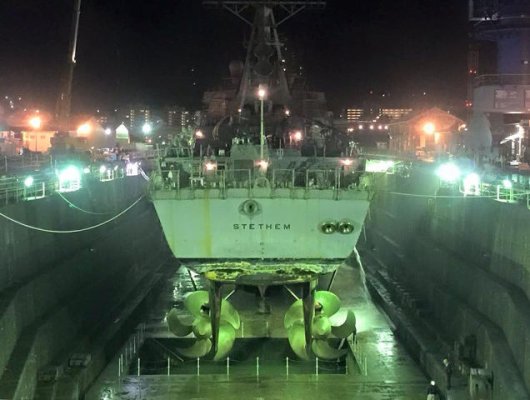Marin how are you going to gain speed by loosing power?
An overpropped engine can't make even it's rated power much less more.
All I know is what Grand Banks as well as people like Bob Lowe on the GB owners forum who for years owned a yard in Oak Harbor that specializes in GBs and who knows more about these boats than God have said.
And it makes perfect sense to me. I'm making these numbers up, but if I get 7 knots at 1700 rpm in a cruiser with a 24" prop pitched at 17 inches, if I put a 24" prop pitched at 18 inches on the boat and run the engine up to 1700 rpm, I'll get 8 knots.
Why? Because the 18" prop is moving more water back at 1700 rpm than the 17" prop did at 1700 rpm. And for every action there's a reaction, right?
I know you know all this, Eric. I'm just giving my explanation.
Now there's no such thing as a free lunch, so what's changed? The throttle position at 1700 rpm has changed.. I have to feed the engine more fuel to make it turn at 1700 rpm with an 18" pitch prop.
So I'm using more fuel, and if I had an EGT gauge on the engine I would see that the exhaust was hotter with the 18" prop at 1700 rpm than it was at 1700 rpm with the 17" prop. So the engine is having to work harder. But the boat is going a knot faster.
So if moving my boat through the water a knot faster is important to me, I can do it with a coarser prop and making the engine work a bit harder and still keep the engine within its normal cruise rpm range.
And this is what Grand Banks did. They made no secret of it; in their promotional material they said that by using a slightly coarser prop their boats would go a bit faster
at cruise power, which is all their owners cared about.
If fuel economy is more important than speed, then I can reduce the work the engine is doing by putting on a flatter prop, and thus reduce the fuel I have to feed the engine to get my 1700 rpm.
In the first couple of decades (or more) of Grand Banks production, fuel cost was not a consideration, and the FL120 was more than capable of doing a bit harder work at the cruising rpm people used--- 1500-1800 rpm (this is a 2500 rpm max engine but nobody in their right mind runs them up near that on a continuous basis).
So overpropping by an inch or so gave the owner a bit more speed through the engine's normal rpm range and the engine didn't care that it had to work a bit harder to do it. The fuel tank did, but fuel cost was not anything anyone worried about back then.


